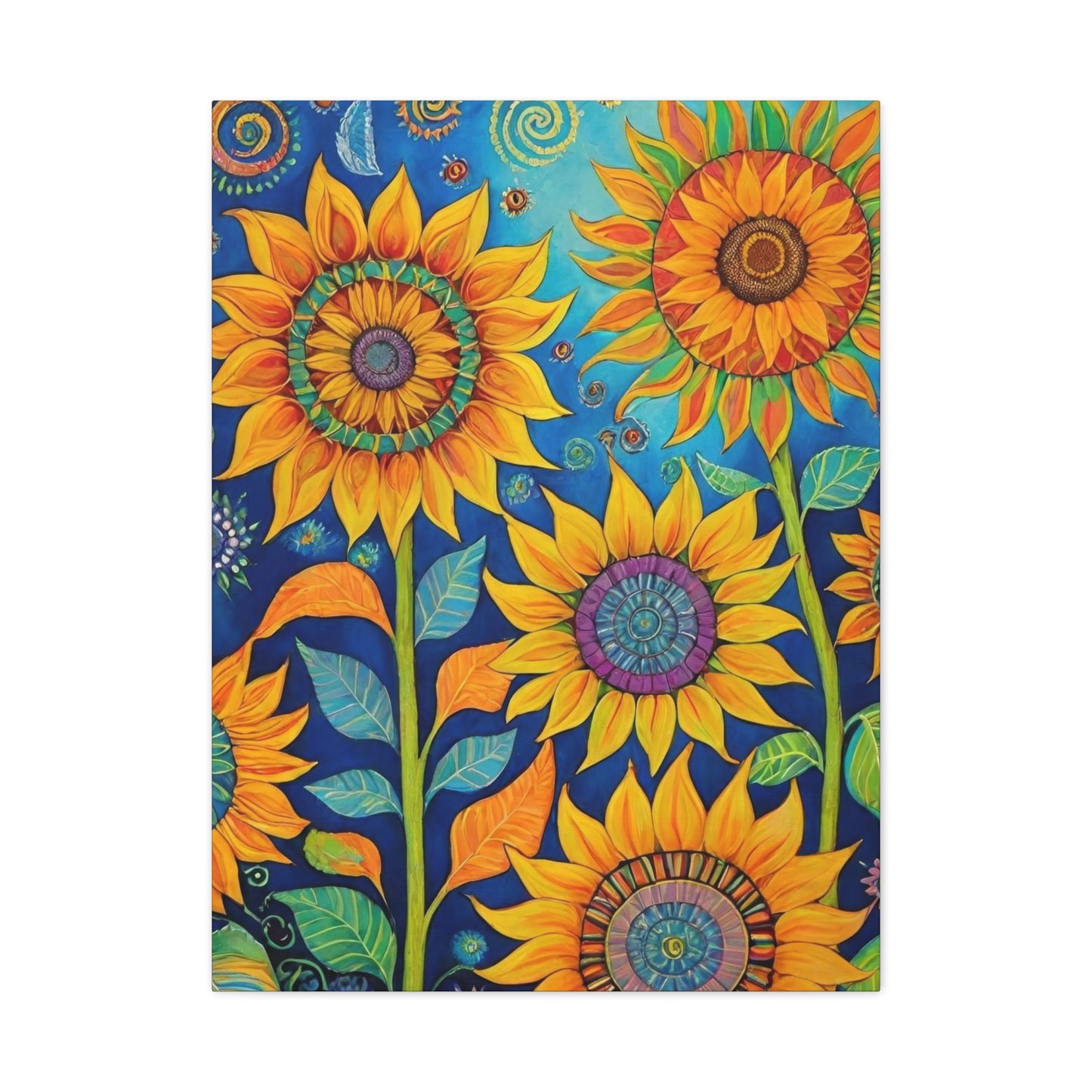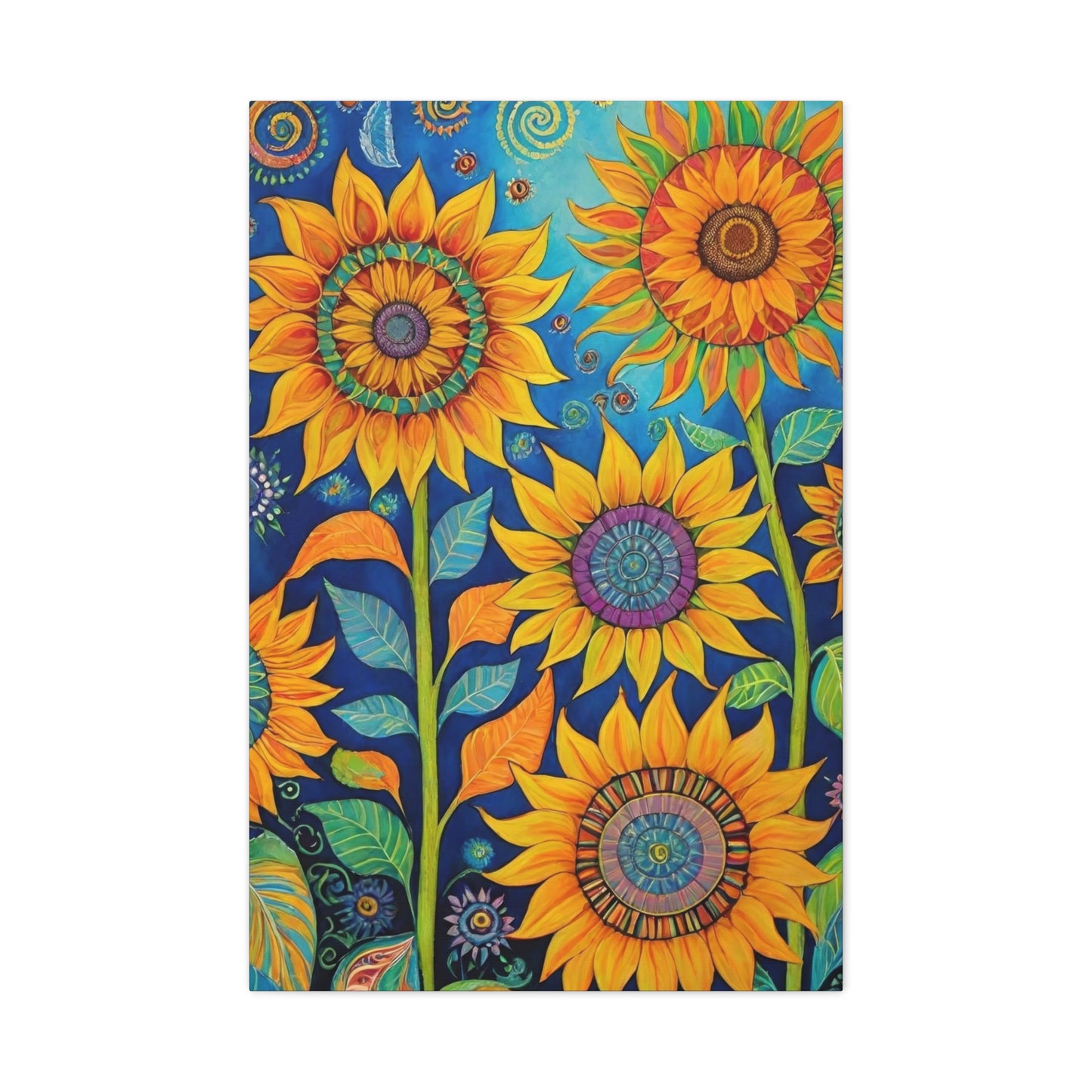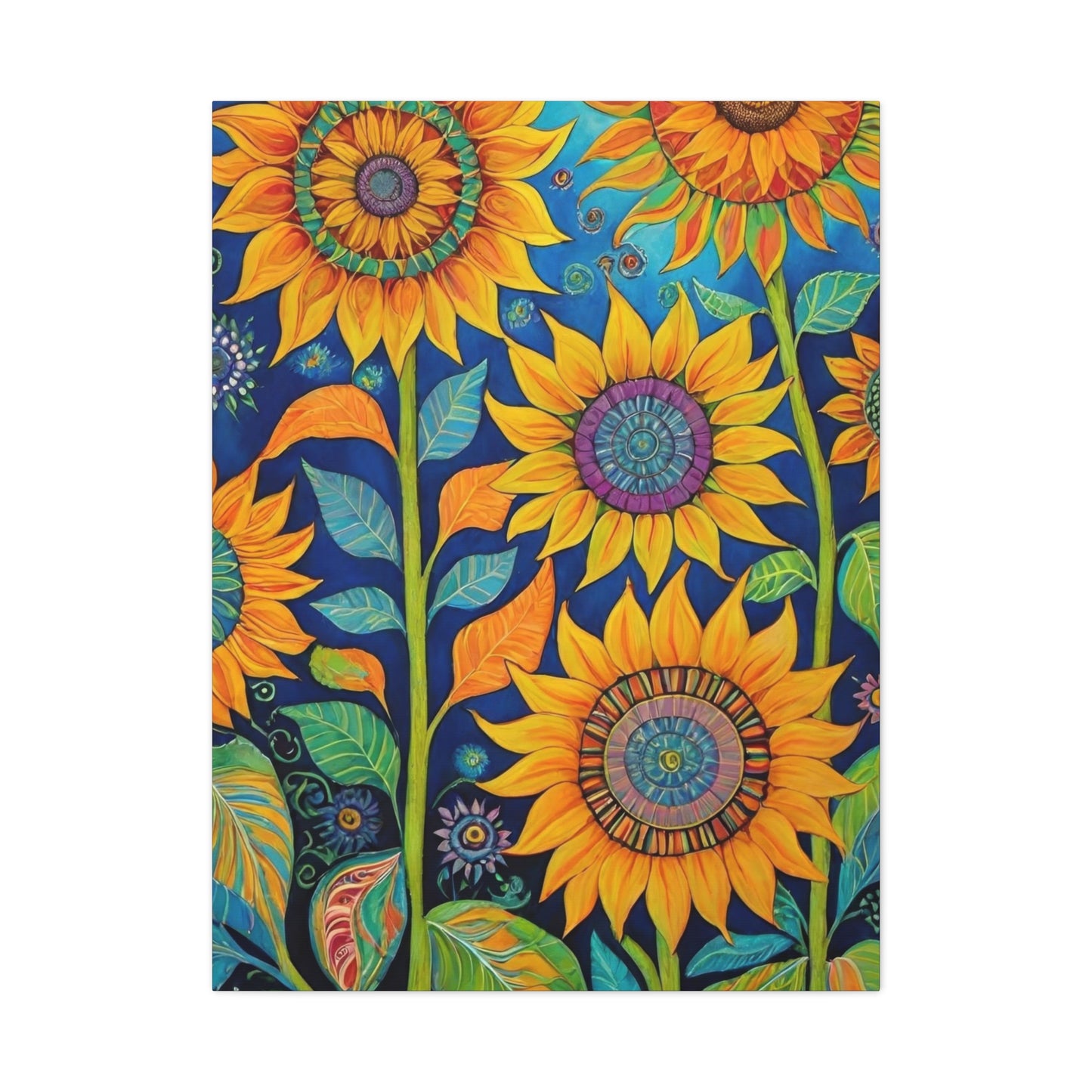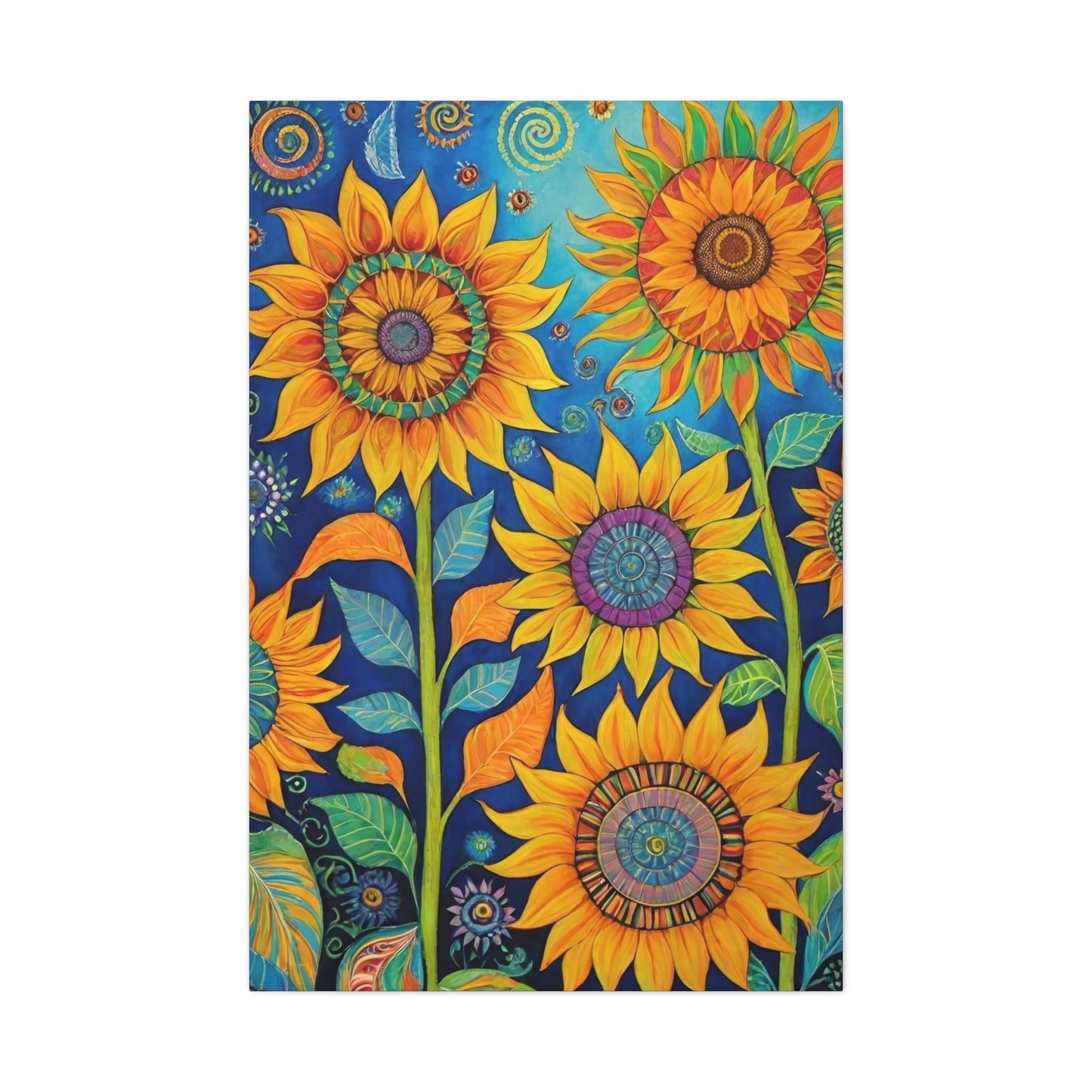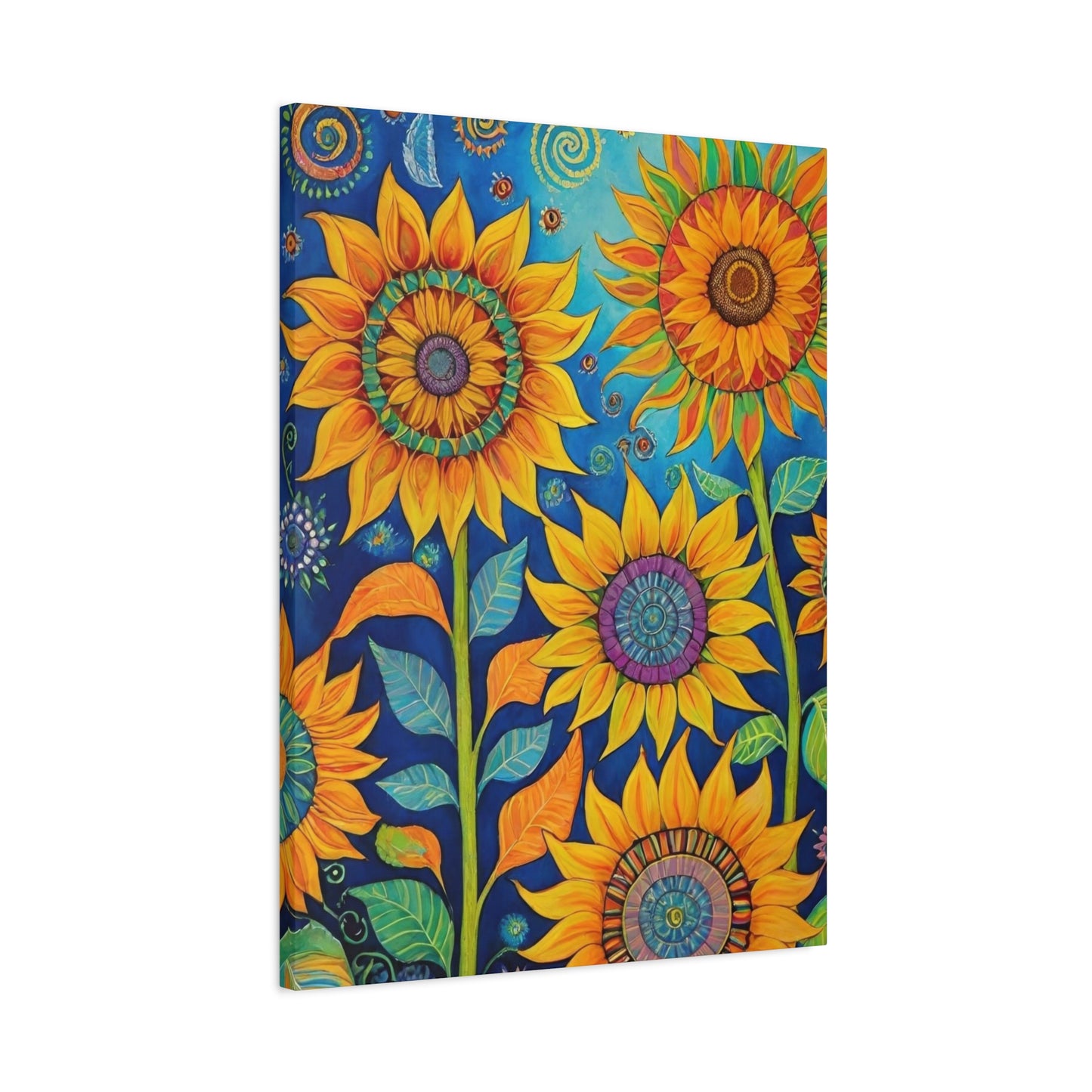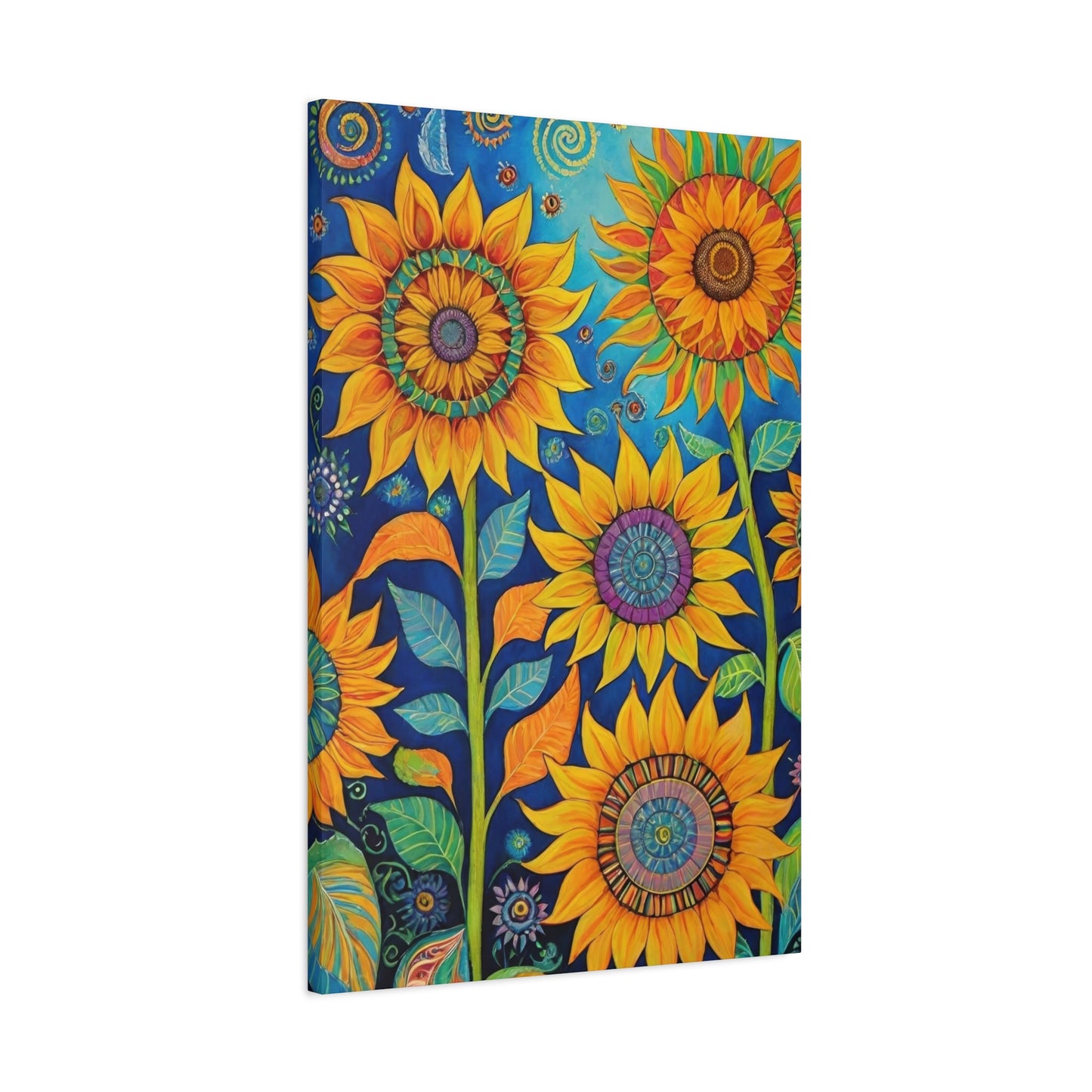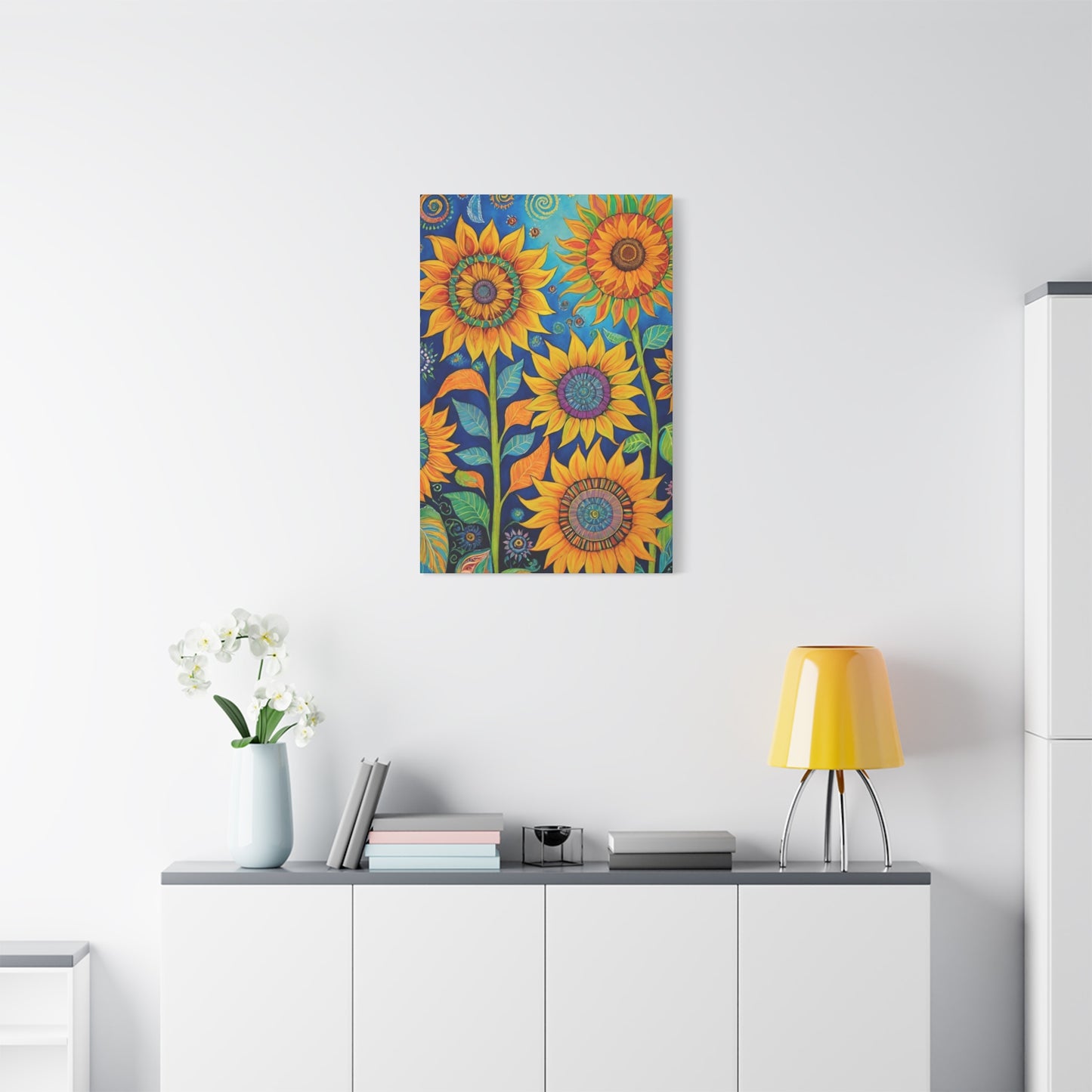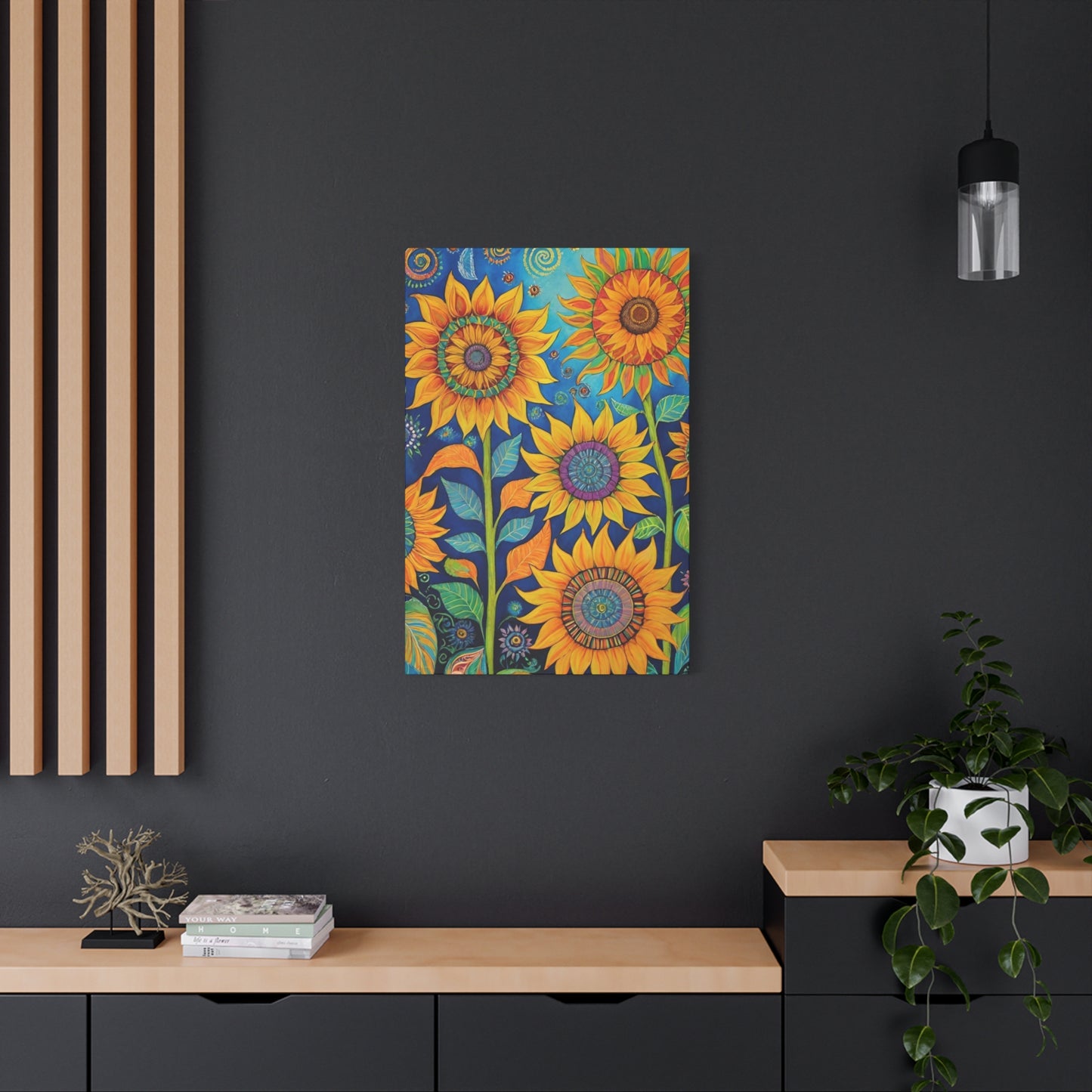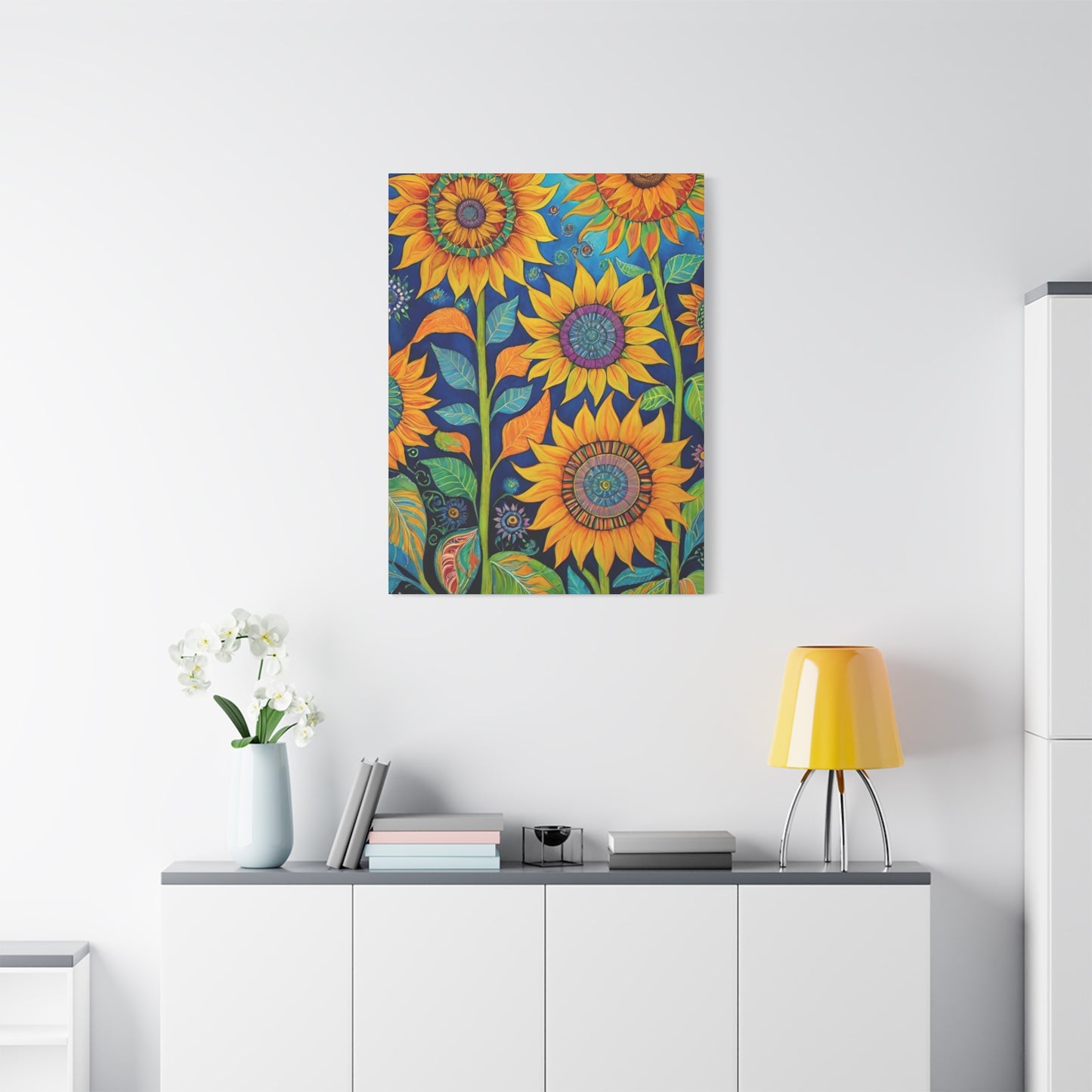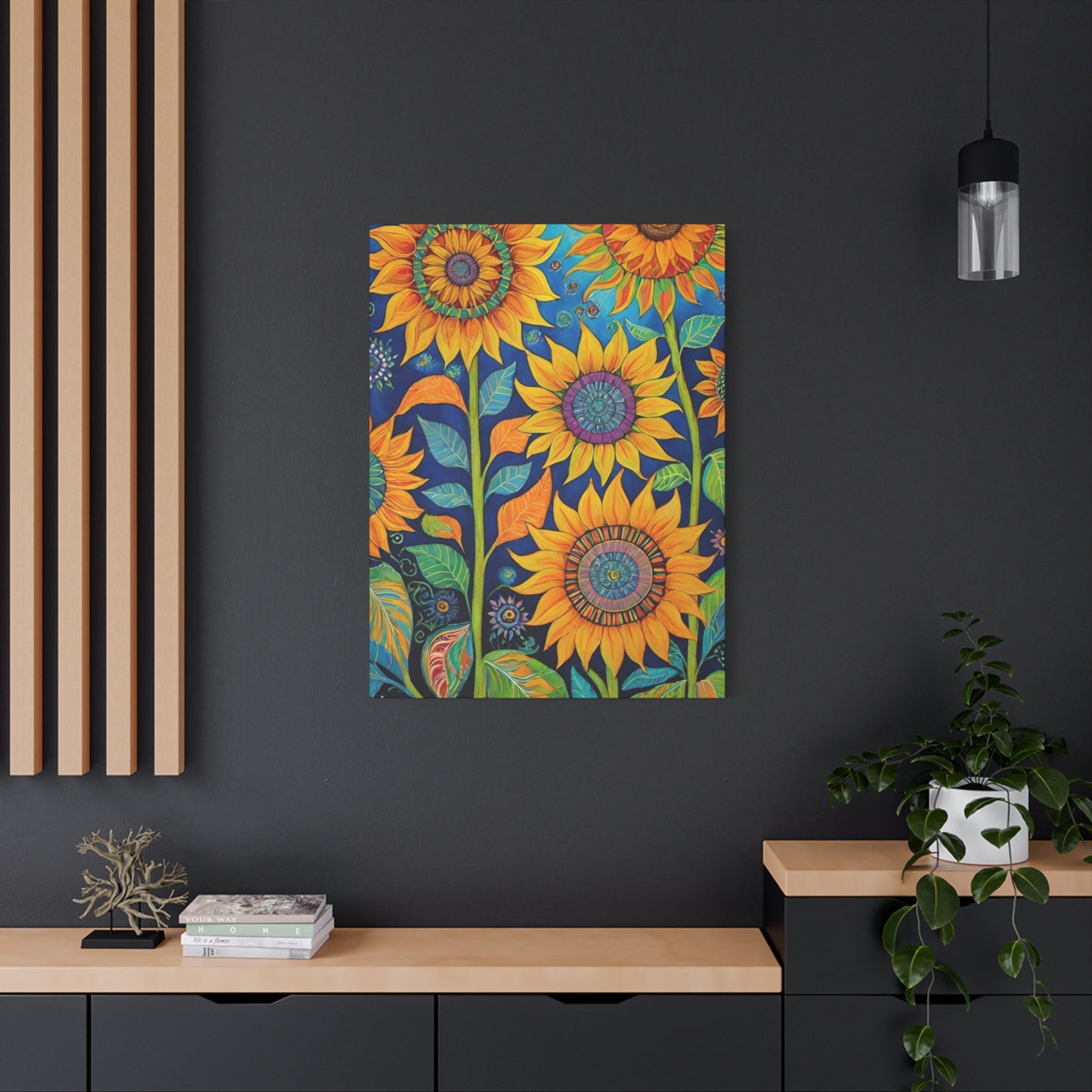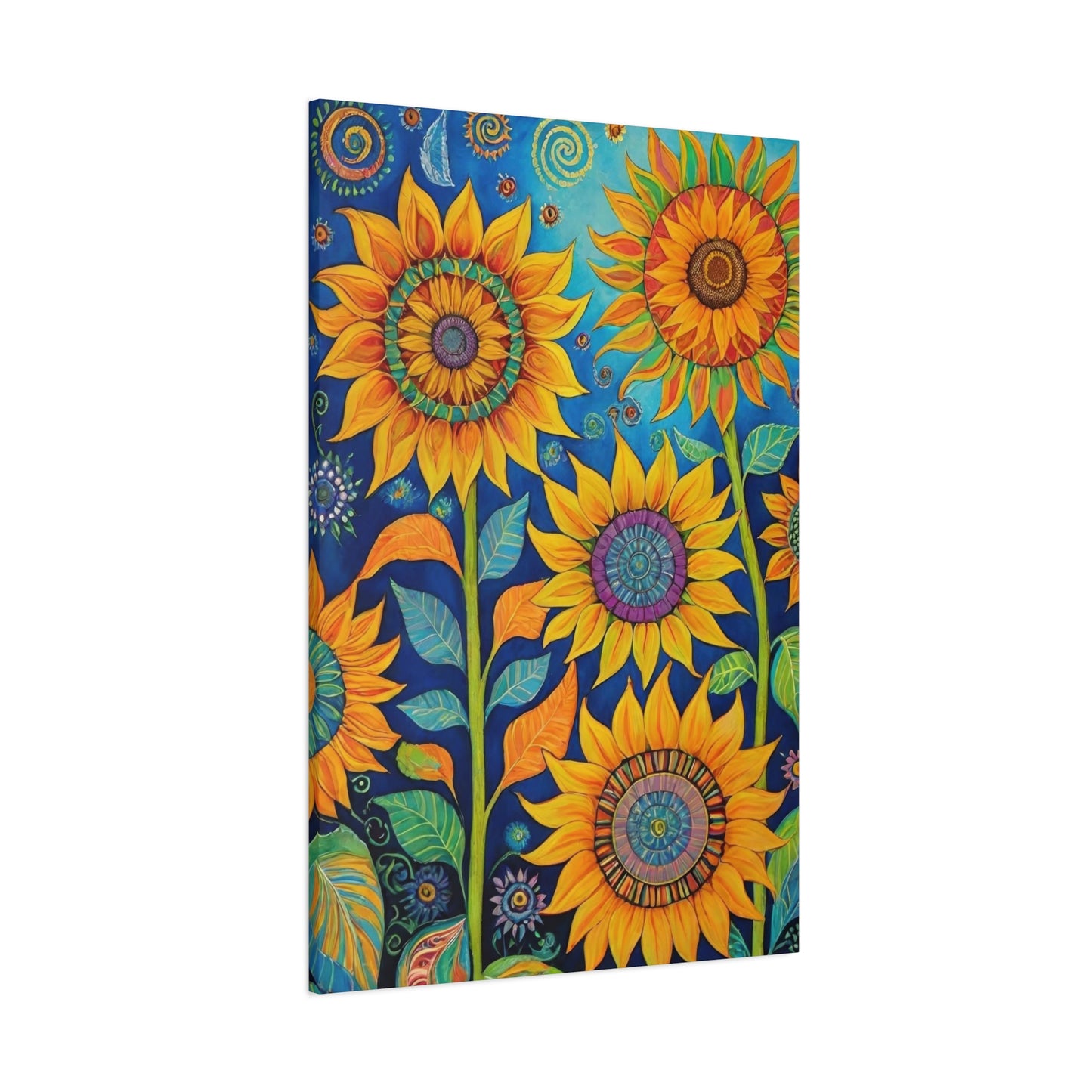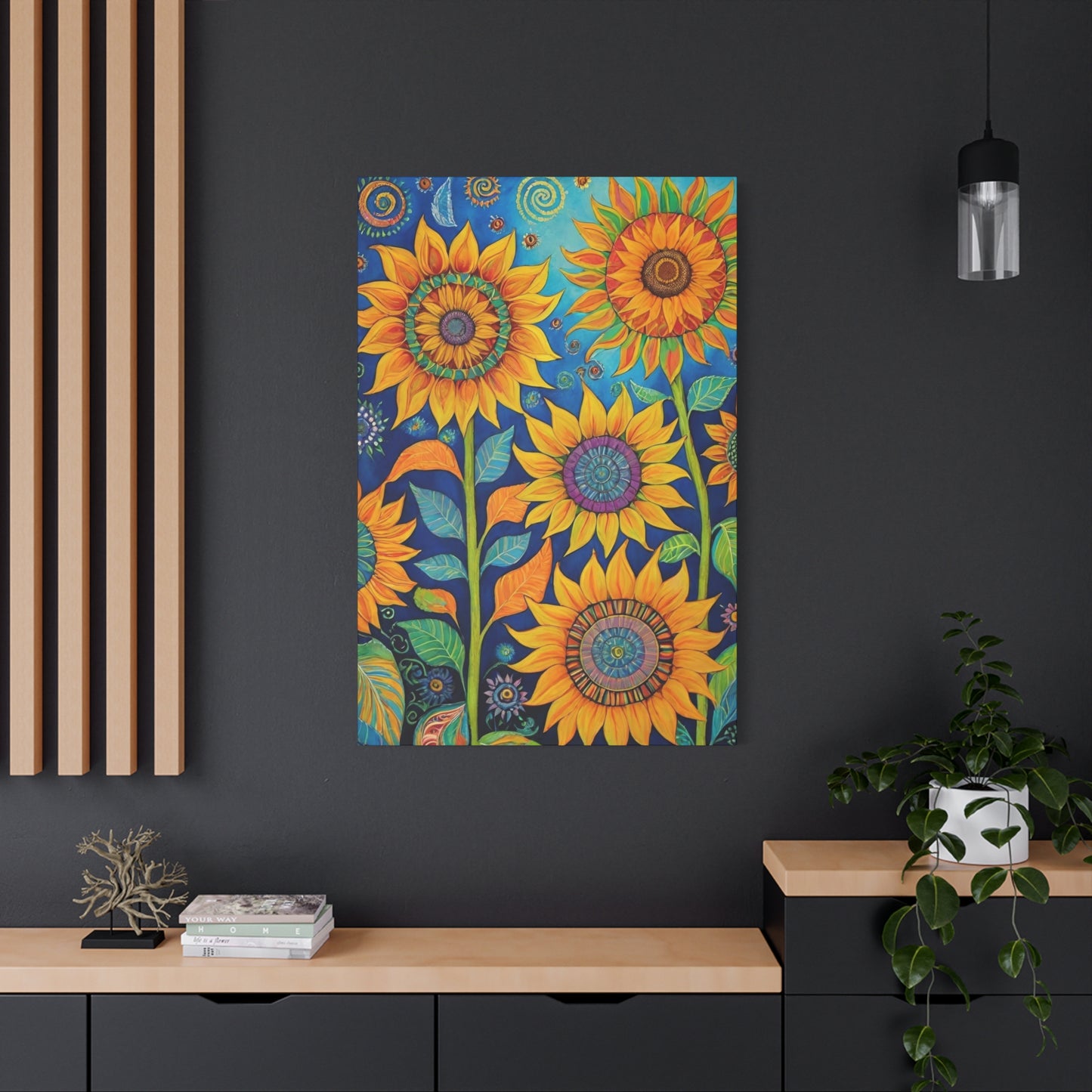The Joy of Sunflowers: Styling Your Space with Fresh Sunflower Wall Art
The allure of botanical artwork has captivated homeowners and interior designers for generations, yet few floral subjects possess the same magnetic charm as the sunflower. With its bold golden petals radiating outward like sun rays and its commanding presence that instantly transforms any environment, this remarkable bloom has earned its place as one of the most beloved motifs in residential decoration. The incorporation of sunflower-themed artwork into living spaces offers far more than aesthetic appeal; it introduces an element of natural vitality that resonates with our innate connection to the outdoors while simultaneously creating focal points that anchor entire rooms with warmth and character.
When considering the addition of botanical elements to your home, the sunflower stands apart as a versatile choice that transcends seasonal trends and stylistic boundaries. Whether your preference leans toward contemporary minimalism, rustic farmhouse charm, or eclectic bohemian flair, these cheerful blooms adapt seamlessly to virtually any design philosophy. The psychological impact of surrounding yourself with imagery that evokes sunshine, growth, and natural abundance cannot be overstated, particularly in our modern lives where connection to nature often feels increasingly distant.
This comprehensive exploration delves into every facet of incorporating sunflower canvas artwork into your residential spaces, from understanding the deeper symbolism these flowers carry to mastering the technical aspects of placement, pairing, and preservation. We'll examine how different artistic interpretations of this iconic bloom can dramatically alter the atmosphere of a room, discuss the science behind color psychology as it relates to golden yellow hues, and provide actionable guidance for selecting pieces that will maintain their visual impact for years to come. Whether you're embarking on a complete home redesign or simply seeking to refresh a single space with an injection of natural beauty, the insights presented here will empower you to make informed decisions that elevate your environment while expressing your unique aesthetic sensibilities.
Bringing Sunshine Indoors with Sunflower Canvas Prints
The transformative power of canvas prints depicting these golden blooms extends far beyond mere decoration, fundamentally altering how we experience our indoor environments. When you introduce imagery of sunflowers into your living space, you're essentially capturing a moment of natural perfection and preserving it in perpetuity, allowing that specific emotional resonance to permeate your daily life. Unlike cut flowers that wilt after mere days or potted plants that require constant maintenance, canvas prints offer permanence while retaining all the visual impact of living botanicals.
The medium of canvas itself contributes significantly to the overall effect of these pieces. Unlike paper prints or photographs mounted on rigid backing, canvas possesses a textured surface that adds depth and dimension to the artwork. This texture interacts beautifully with light throughout the day, creating subtle shadows within the petals and leaves that give the impression of movement and life. The slight give of stretched canvas also produces a more organic feel compared to completely rigid wall coverings, creating a softer, more approachable aesthetic that invites closer inspection and engagement.
Modern printing technologies have revolutionized the quality and accessibility of canvas artwork featuring botanical subjects. High-resolution imaging captures every nuance of the original photograph or painting, from the intricate patterns within the flower's center disk to the delicate veining in each petal. Advanced pigment-based inks ensure that these details remain vibrant and true to life for decades, resisting the fading that plagued earlier printing methods. This technological evolution means that homeowners no longer need to choose between affordability and quality; exceptional sunflower canvas prints are now accessible at various price points without sacrificing visual impact.
The psychological benefits of incorporating nature imagery into indoor spaces have been extensively documented by environmental psychologists and design researchers. Studies consistently demonstrate that exposure to natural elements, even in representational form, reduces stress levels, improves mood, and enhances cognitive function. Sunflowers, with their association with warmth, growth, and positive energy, amplify these effects. Placing such artwork in spaces where you spend significant time working, relaxing, or gathering with family creates an environment that subtly but consistently supports your wellbeing.
Size consideration plays a crucial role in maximizing the impact of these prints. A large-scale canvas featuring a close-up of a single sunflower can serve as a dramatic focal point, immediately drawing the eye and establishing the room's aesthetic direction. Conversely, smaller prints arranged in groupings create visual interest through repetition and variation, allowing you to tell a more complex story through your décor. The key lies in understanding the proportions of your space and selecting pieces that complement rather than overwhelm the existing architecture and furnishings.
Placement strategy deserves careful thought when installing canvas prints. Height matters significantly; art positioned at eye level creates the most comfortable viewing experience and integrates most naturally into the visual flow of a room. However, this guideline flexes depending on the specific space and its primary function. In dining areas, where people spend considerable time seated, lowering artwork slightly ensures that diners can appreciate it without craning their necks. In entryways or hallways where people primarily stand or walk past, standard eye-level placement works beautifully.
Lighting considerations can make or break the effectiveness of your sunflower canvas display. Natural light brings out the warmth and richness of golden yellow tones, making spaces with abundant windows ideal locations for these pieces. However, direct sunlight should be avoided, as prolonged exposure can gradually fade even the highest-quality prints. Artificial lighting offers more control; picture lights mounted directly above the canvas create gallery-style illumination that highlights the artwork while adding ambient light to the room. Alternatively, strategic placement near existing light fixtures can achieve similar effects without additional installation.
The versatility of these prints extends to their ability to bridge different design eras and philosophies within a single home. If you're working with an open floor plan where multiple distinct areas share visual space, sunflower artwork can serve as a unifying element that creates coherence without demanding strict stylistic consistency. The natural subject matter provides common ground that allows neighboring spaces to maintain their individual character while still feeling connected and intentional.
Seasonal considerations might initially seem relevant to floral artwork, but sunflowers possess a unique timelessness that transcends typical seasonal associations. While they bloom primarily in summer and early autumn, their representation of growth, vitality, and warmth makes them appropriate year-round additions to your décor. During darker winter months, these prints become even more valuable, offering a visual reminder of brighter days and helping to combat the mood-dampening effects of reduced natural light.
The Joyful Energy of Yellow Blooms in Wall Décor
The color psychology surrounding yellow hues provides fascinating insight into why sunflower artwork creates such immediate emotional impact. Yellow occupies a unique position in the visible spectrum, naturally drawing attention and stimulating mental activity in ways that cooler colors cannot replicate. This attention-grabbing quality makes yellow ideal for spaces where you want to encourage energy, creativity, and social interaction, while its association with sunshine and warmth creates an inherently welcoming atmosphere.
Different shades of yellow present in sunflower artwork produce distinctly different effects. Bright, saturated yellows radiate energy and enthusiasm, perfect for spaces dedicated to activity and engagement like playrooms, craft studios, or social areas. Softer, buttery yellows create a gentler warmth that works beautifully in bedrooms, reading nooks, or other spaces intended for relaxation and contemplation. Golden yellows, which contain subtle orange undertones, add richness and sophistication that elevates dining rooms and formal living areas. Understanding these nuances allows you to select pieces that align with the specific mood you wish to cultivate in each space.
The interaction between yellow artwork and surrounding color schemes requires thoughtful consideration. Yellow plays exceptionally well with neutral palettes, where it serves as a vibrant accent that prevents beige, gray, or white schemes from feeling sterile or cold. Against darker backgrounds like navy, charcoal, or forest green, yellow creates dramatic contrast that makes the artwork pop with striking intensity. In spaces already featuring multiple colors, yellow's ability to harmonize with both warm and cool tones makes it a diplomatic choice that enhances rather than clashes with existing elements.
Beyond pure color theory, the specific composition of sunflower artwork influences its emotional impact. Close-up perspectives that fill the frame with petals and center disk create intimate, immersive experiences that draw viewers into the natural details. Compositions showing entire plants with stems and leaves establish a sense of growth and natural context that can make spaces feel more grounded and connected to the earth. Fields of multiple sunflowers introduce elements of abundance and community, evoking pastoral imagery that soothes and inspires simultaneously.
The cultural associations carried by sunflowers enrich their presence in your home with layers of meaning beyond pure aesthetics. Various traditions associate these flowers with loyalty, longevity, and lasting happiness, making them particularly meaningful additions to family homes where these values hold importance. The sunflower's botanical behavior of turning toward the sun throughout the day has inspired countless metaphors about seeking light, remaining optimistic, and staying oriented toward positive goals. Having these symbolic reminders present in your daily environment subtly reinforces these values and aspirations.
Artistic style dramatically alters how sunflower imagery affects a space. Photorealistic prints capture every botanical detail with scientific precision, appealing to those who appreciate nature's complexity and accuracy in representation. Impressionistic interpretations emphasize light, color, and emotion over precise detail, creating softer, more romantic atmospheres. Bold, graphic treatments with simplified forms and contrasting colors introduce contemporary edge that suits modern design schemes. Abstract approaches that capture the essence of sunflowers through color and gesture rather than literal representation offer sophisticated options for spaces where subtlety and artistic statement take precedence over obvious subject matter.
The scale at which sunflowers are depicted affects both visual impact and emotional resonance. Oversized blooms that exceed their natural proportions create surreal, dreamlike qualities that spark imagination and conversation. Life-size representations feel authentic and relatable, establishing comfortable connections between the artwork and viewer. Miniature depictions arranged in multiples create pattern and rhythm that can make smaller spaces feel more dynamic without overwhelming limited square footage.
Textural elements in canvas prints add another dimension to the sensory experience of sunflower artwork. Some pieces incorporate gel mediums or dimensional printing techniques that create actual raised surfaces mimicking brushstrokes or petal contours. These tactile qualities invite closer inspection and engagement, transforming the artwork from purely visual stimulus into something more multidimensional. Even standard canvas prints possess inherent texture from the woven fabric substrate, providing subtle visual interest that flat paper prints cannot match.
The nostalgic quality often associated with sunflowers stems from their presence in various cultural touchstones and personal memories. Many people recall sunflower fields from childhood trips, gardens maintained by beloved grandparents, or iconic artworks encountered in museums. Bringing sunflower imagery into your home taps into these associations, creating environments that feel personally meaningful rather than simply decorated. This emotional layer transforms houses into homes by surrounding inhabitants with reminders of positive experiences and cherished connections.
Fresh Sunflower Art for Bright and Cheerful Interiors
Creating bright and cheerful interiors requires more than simply painting walls in light colors or maximizing window space. The artwork you select plays a pivotal role in establishing and maintaining the emotional tone of your living environment. Sunflower pieces excel in this regard, offering concentrated doses of visual optimism that permeate entire rooms. The inherent cheerfulness of these flowers transcends individual taste, appealing to a broad spectrum of personalities and age groups while maintaining sophisticated design credibility.
The concept of freshness in artwork relates not to the physical state of the canvas but to the feeling it evokes. Art depicting newly bloomed sunflowers at their peak captures a specific moment of natural perfection that communicates vitality and renewal. This quality proves particularly valuable in spaces that might otherwise feel stale or uninspiring. Rooms lacking natural light, areas with limited views, or spaces dominated by necessary but uninspiring furniture benefit enormously from artwork that injects freshness through color, subject matter, and composition.
Brightness in interior design extends beyond lumens and wattage to encompass the overall energy and atmosphere of a space. Dark rooms can feel bright when filled with the right visual elements, just as well-lit rooms can feel dull without compelling focal points. Sunflower artwork addresses both aspects simultaneously, introducing cheerful yellow tones that reflect light while providing engaging visual content that makes spaces feel alive and dynamic. This dual function makes such pieces particularly cost-effective additions to your décor arsenal, delivering multiple benefits through a single purchase.
The relationship between artwork and natural elements in bright interiors deserves attention. While living plants obviously contribute to fresh, cheerful atmospheres, not every space offers conditions suitable for maintaining healthy specimens. Low-light areas, rooms with temperature extremes, or homes occupied by individuals without time or inclination for plant care benefit from botanical artwork that provides similar visual impact without maintenance demands. Sunflower prints offer permanent botanical presence that never requires watering, pruning, or worrying about pest infestations.
Layering artwork with other decorative elements amplifies its impact on interior brightness and cheer. A sunflower canvas paired with coordinating throw pillows, area rugs, or window treatments creates cohesive design schemes that feel intentional and polished. However, the key lies in balancing repetition with variety; too much literal matching can feel heavy-handed, while thoughtful coordination that echoes colors and themes without exact duplication achieves sophisticated results. Using sunflower artwork as an anchor piece around which other elements revolve prevents spaces from feeling chaotic while allowing individual items to maintain their distinct character.
The psychological mechanism through which bright, cheerful artwork affects occupants involves both conscious appreciation and subconscious processing. When you intentionally observe a beautiful sunflower print, you experience direct aesthetic pleasure and perhaps memories or associations triggered by the imagery. However, even when not actively looking at the piece, your peripheral vision continues registering its presence, and your brain continues processing the emotional signals conveyed by its colors and subject matter. This constant background influence accumulates over time, subtly but persistently affecting your mood and mental state whenever you occupy that space.
Maintenance of canvas prints ensures they continue contributing brightness and cheer for years or decades. Dust accumulation dulls colors and obscures details, diminishing impact over time. Regular light dusting with soft, dry cloths preserves vibrancy without risking damage to the canvas or printed surface. Avoiding harsh chemicals, excessive moisture, or abrasive materials protects your investment while maintaining the fresh appearance that made the piece appealing initially. Proper care proves especially important for artwork in high-traffic areas or spaces prone to cooking residue, humidity, or other environmental challenges.
The adaptability of sunflower artwork to various bright interior styles demonstrates its remarkable versatility. Scandinavian design schemes emphasizing clean lines, natural materials, and pops of color accommodate sunflower pieces beautifully, using them as the vibrant accents that prevent Nordic minimalism from feeling stark. Cottage-style interiors with their relaxed, collected-over-time aesthetic embrace sunflower artwork as natural companions to vintage finds and comfortable furnishings. Contemporary spaces leverage the bold colors and graphic qualities of sunflowers to create striking focal points that anchor otherwise neutral palettes.
Seasonal rotation strategies allow you to maximize the impact of sunflower artwork throughout the year. While these pieces work beautifully as permanent installations, alternating them with other botanical subjects or landscape artwork refreshes spaces and prevents visual fatigue. Storage considerations matter for pieces not currently displayed; climate-controlled environments protect canvas from temperature and humidity fluctuations that could cause warping or deterioration. However, many homeowners find sunflower artwork sufficiently timeless and cheerful that rotation becomes unnecessary, as the flowers' associations with warmth and growth remain relevant regardless of season.
How Sunflower Wall Art Revives Modern Living Spaces
Modern living spaces, characterized by clean lines, minimal ornamentation, and emphasis on function, sometimes risk feeling cold or impersonal despite their visual appeal. The introduction of sunflower wall art addresses this potential shortcoming by adding organic warmth without compromising the streamlined aesthetic that defines contemporary design. The key lies in selecting pieces and placements that complement rather than contradict the modern sensibility, using natural subject matter as a bridge between stark minimalism and comfortable livability.
The revival sunflower artwork brings to modern spaces operates on multiple levels. Visually, these pieces interrupt expanses of neutral walls with concentrated color and organic form, creating focal points that give the eye places to rest and engage. Emotionally, they introduce elements of nature, growth, and traditional beauty that balance the sometimes austere qualities of modern architecture and furnishings. Practically, they demonstrate that modern design need not reject decoration entirely but rather can be selective about which decorative elements to include and how to integrate them thoughtfully.
Scale considerations become particularly important in modern contexts where negative space functions as a design element in itself. Oversized sunflower canvases make bold statements that align with modern design's preference for dramatic, intentional choices over accumulated clutter. A single large piece often serves modern spaces better than multiple smaller prints, as it maintains the clean, uncluttered aesthetic while still providing the benefits of botanical artwork. When multiple pieces are used, symmetrical arrangements or precise grids maintain the order and structure that modern design values.
The interplay between organic and geometric elements creates visual interest that keeps modern spaces from feeling monotonous. Sunflowers, with their radial symmetry and mathematical spiral patterns, actually contain significant geometric structure despite being natural subjects. This duality makes them particularly well-suited to modern interiors, where they simultaneously satisfy the design style's appreciation for form and pattern while introducing the organic curves and natural colors that prevent spaces from feeling overly rigid or artificial.
Color palette coordination proves essential when incorporating sunflower artwork into modern environments. Many contemporary spaces employ restricted color schemes, often limiting accent colors to one or two carefully chosen hues. Sunflower yellow can serve as this accent color, repeated sparingly throughout the space in other elements like throw pillows, vases, or small decorative objects. This approach creates cohesion and intentionality that feels distinctly modern while still benefiting from the warmth and cheer that golden yellow provides.
The revival of tired modern spaces often requires nothing more than strategic addition of the right artwork. Rooms that have grown stale or feel incomplete may lack sufficient visual interest rather than suffering from fundamental design flaws. A well-chosen sunflower canvas can transform such spaces instantly, providing the missing element that brings the entire room into focus. This transformation proves particularly dramatic in spaces dominated by white, gray, or other neutral tones, where the introduction of vibrant yellow creates immediate impact.
Framing choices significantly influence how sunflower artwork integrates with modern design schemes. Frameless gallery wraps, where the canvas extends around the edges of the stretcher bars with no visible border, align perfectly with modern minimalism's clean aesthetic. When frames are used, slim profiles in metals like brushed aluminum or stainless steel maintain contemporary character while providing finished edges that some spaces require. Traditional ornate frames would clash with modern sensibilities, creating visual confusion rather than harmonious integration.
Lighting design in modern spaces can be leveraged to enhance sunflower artwork dramatically. Track lighting, recessed spotlights, or modern picture lights with sleek profiles all work beautifully to illuminate botanical pieces while contributing to the overall lighting scheme. The golden yellows of sunflowers interact particularly beautifully with warm-toned LED bulbs, which enhance their natural richness without the color distortion that some lighting technologies introduce.
The psychological impact of reviving modern living spaces with natural elements addresses a fundamental human need. Research in biophilic design demonstrates that humans possess innate connections to nature that remain present even in highly urbanized, modern lifestyles. Spaces that completely exclude natural references can trigger subtle stress responses and reduced wellbeing, even if occupants consciously appreciate the modern aesthetic. Sunflower artwork provides a solution that respects modern design principles while acknowledging these deeper human needs, creating environments that feel both current and comfortable.
Material authenticity matters in modern design contexts, where quality and craftsmanship receive high value. Canvas prints produced using archival materials and professional printing techniques demonstrate the commitment to quality that modern design philosophies embrace. Cheap prints on flimsy materials or those showing obvious pixelation or color banding would undermine rather than enhance modern spaces. Investment in properly produced pieces ensures that your artwork contributes positively to the sophisticated atmosphere that modern design seeks to create.
The Symbolism of Sunflowers in Home Decoration
Understanding the rich symbolic heritage associated with sunflowers adds depth and meaning to their presence in your home, transforming them from mere decorative choices into conscious expressions of values and aspirations. Throughout human history and across diverse cultures, these remarkable flowers have accumulated layers of significance that resonate with fundamental human experiences and desires. Incorporating them into your living space allows you to tap into this symbolic richness, creating environments that communicate beyond pure aesthetics.
The most universal symbolism attached to sunflowers relates to their namesake connection with the sun. As the flower follows the sun's movement across the sky during its growth phase, it has come to represent devotion, loyalty, and steadfast focus on the positive. Having this imagery in your home serves as a daily reminder to maintain orientation toward light and goodness, to remain devoted to people and principles that matter, and to keep growing toward your own sources of nourishment and illumination. These metaphors work on both conscious and subconscious levels, subtly influencing thought patterns and emotional responses.
Different cultural traditions attribute specific meanings to sunflowers that enrich their decorative presence. In Chinese culture, sunflowers symbolize long life, good luck, and vitality, making them auspicious additions to homes where these aspirations hold importance. Native American traditions associated sunflowers with harvest, provision, and the nurturing aspects of nature, connecting them with abundance and sustenance. European flower language, particularly popular during the Victorian era, linked sunflowers with adoration and dedication, making them appropriate symbols for homes focused on family bonds and lasting relationships.
The sunflower's botanical characteristics themselves carry symbolic weight. Their ability to grow tall and strong from tiny seeds represents potential, growth, and the remarkable transformations possible through proper nurturing and favorable conditions. Their production of numerous seeds symbolizes fertility, abundance, and the generous sharing of resources. Their bright, open faces suggest honesty, openness, and straightforward communication. Having these symbols present in your living environment reinforces these qualities and values, creating spaces that feel aligned with positive principles.
Spiritual and religious traditions have also embraced sunflower symbolism in ways that inform their use in home decoration. The radial symmetry of the flower's head mirrors sacred geometry patterns found in various spiritual traditions, suggesting cosmic order and divine perfection. The golden color connects to concepts of enlightenment, higher consciousness, and spiritual illumination in multiple belief systems. The flower's tendency to face the light has been interpreted as representing the soul's orientation toward the divine or truth. For individuals who resonate with these spiritual dimensions, sunflower artwork becomes more than decoration; it serves as a daily touchstone for contemplation and spiritual practice.
The emotional symbolism of sunflowers centers on joy, optimism, and positive energy. Unlike flowers associated with more complex or melancholic emotions, sunflowers communicate straightforward happiness and warmth. This uncomplicated positivity makes them particularly valuable in spaces where you want to cultivate uplifting atmospheres, whether to counter external stressors, support mental wellbeing, or simply create environments where joy can flourish. The psychological impact of surrounding yourself with symbols of happiness should not be underestimated; our environments significantly influence our emotional states, and intentionally choosing symbols that promote positivity creates subtle but persistent support for mental health.
The association between sunflowers and summer extends their symbolism to include memories, nostalgia, and the preservation of fleeting moments. Summer represents peak vitality, freedom, and the fullness of life in many cultural frameworks. By bringing sunflower imagery into your home, you capture and extend these qualities beyond the limited summer season, creating year-round access to the feelings and memories associated with this special time. This symbolic extension of summer helps combat the emotional challenges that winter's darkness can bring, maintaining connection to warmth and light even during colder months.
Personal symbolism sometimes matters more than cultural or universal meanings. If you have specific positive associations with sunflowers from your own life experiences, having them present in your home activates those personal memories and connections. Perhaps sunflowers grew in a beloved grandparent's garden, or marked a particularly happy phase of your life, or represented a turning point or achievement. These personal symbolic connections make sunflower artwork uniquely meaningful in ways that transcend standard decorating advice, transforming your space into a repository of your own story and identity.
The symbolic communication that artwork provides extends to visitors and guests who enter your home. The choices you make in decoration tell a story about your values, personality, and the kind of environment you wish to create. Sunflower art communicates warmth, welcoming energy, and appreciation for natural beauty. It suggests optimism without naivety, strength without harshness, and beauty without pretension. These are powerful messages to send to those who enter your space, establishing emotional tone and expectations for interactions that occur within your home.
Rustic Charm Meets Modern Style in Sunflower Art
The intersection of rustic charm and modern style represents one of the most popular and successful design trends of recent years, and sunflower artwork serves as an ideal element for achieving this balanced aesthetic. The inherent qualities of sunflowers allow them to bridge these seemingly disparate design philosophies, creating cohesive spaces that feel both comfortable and contemporary, both grounded and fresh. Understanding how to leverage sunflower imagery to achieve this balance empowers you to create uniquely appealing environments that transcend single-style limitations.
Rustic design elements emphasize natural materials, weathered textures, and connections to traditional craftsmanship and agricultural heritage. Sunflowers, with their associations with farming, harvest, and rural landscapes, naturally align with these rustic sensibilities. However, modern presentation and framing can prevent these pieces from feeling overly country or kitsch, instead creating sophisticated blends that honor rustic roots while remaining firmly current. The key lies in the artistic treatment and styling context rather than the subject matter itself.
Canvas material itself contributes to the rustic modern fusion. Unlike slick acrylic or glass-mounted prints that read as distinctly modern, canvas possesses organic texture and slight imperfection that nods to traditional artistic media while still working beautifully in contemporary spaces. Gallery-wrapped canvas with visible staples on the back maintains modern clean lines from the front while showing honest construction details that rustic aesthetics value. This material choice allows the artwork to function comfortably in spaces mixing reclaimed wood furniture with sleek modern lighting, or pairing vintage textiles with contemporary architectural elements.
Color treatment in sunflower artwork significantly influences whether pieces lean more rustic or modern. Saturated, true-to-nature colors maintain connection to the actual flowers and rural settings where they grow, supporting rustic character. Desaturated or monochromatic treatments push artwork toward modern minimalism while retaining the recognizable sunflower form. Split the difference with slightly muted golden yellows and warm neutrals creates the middle ground where rustic charm and modern style meet most successfully, offering warmth without overwhelming vibrancy and contemporary sophistication without cold detachment.
Compositional choices affect the rustic modern balance as well. Traditional botanical illustration styles with specimens shown in profile against plain backgrounds lean slightly rustic through their connection to historical scientific documentation. Close-up abstract interpretations that emphasize color, form, and texture over representational accuracy push toward modern artistic sensibilities. Compositions showing sunflowers in natural settings with visible stems, leaves, and earth create rustic context, while clean crops focusing solely on blooms against minimal backgrounds maintain modern simplicity.
The styling context surrounding sunflower artwork determines how successfully it bridges rustic and modern aesthetics. A beautifully printed sunflower canvas can read quite differently depending on what surrounds it. Paired with mason jar vases, distressed wood shelving, and linen textiles, it enhances rustic farmhouse charm. Mounted on crisp white walls between modern metal sconces and surrounded by geometric furniture, the same piece takes on contemporary character. Combining these elements intentionally creates the fusion aesthetic where both design languages coexist and enhance each other rather than competing.
Architectural context also plays a role in how sunflower art functions within rustic modern spaces. Homes with exposed beams, brick walls, or other distinctly rustic architectural features benefit from modern artwork that prevents spaces from becoming overwhelmingly country. Conversely, modern construction with clean drywall and contemporary windows welcomes rustic elements like sunflower imagery to warm and personalize otherwise stark environments. The artwork serves as a mediating element that helps disparate architectural and decorative elements feel intentionally combined rather than accidentally mixed.
Scale and proportion considerations impact the rustic modern balance. Oversized statement pieces lean modern through their bold, intentional scale and their function as focal points rather than collection items. Multiple smaller pieces arranged in salon-style groupings nod to rustic traditions of accumulated personal collections while maintaining visual interest through repetition and variation. The choice depends on the specific space and desired emphasis, but both approaches can successfully marry rustic and modern sensibilities when executed thoughtfully.
Metallic accents provide another tool for balancing rustic and modern qualities in sunflower artwork. Touches of gold leaf, bronze, or copper in the artwork or frame add richness and visual interest while connecting to both rustic metal craft traditions and modern metallic design trends. These accents catch light and add dimension, creating pieces that reward closer inspection while contributing to the overall luminosity that makes spaces feel finished and intentional.
The flexibility of sunflower imagery to work within the rustic modern fusion extends to its functionality across various rooms and purposes. From kitchens where rustic farm tables meet modern appliances to living rooms pairing leather sofas with industrial lighting, sunflower artwork provides cohesive thread that unifies diverse elements. This versatility proves particularly valuable in open floor plans where multiple functional areas share visual space, as a consistent artistic theme helps create flow and connection without demanding strict stylistic uniformity.
Fresh Sunflower Wall Art for Farmhouse-Inspired Homes
Farmhouse design has experienced remarkable popularity growth in recent years, and sunflower wall art stands as one of the quintessential elements that define and enhance this beloved aesthetic. The natural affinity between sunflowers and farmhouse style stems from shared values of simplicity, connection to the land, and celebration of agricultural heritage. Understanding how to select and display sunflower artwork specifically for farmhouse-inspired spaces ensures maximum impact and authenticity in achieving this warm, welcoming design direction.
Authentic farmhouse style balances practical utility with beauty, emphasizing functional objects that also provide visual appeal. Sunflower artwork fits this philosophy perfectly, serving the practical purpose of filling wall space while delivering the aesthetic benefits of color, natural imagery, and emotional warmth. The best pieces for farmhouse settings capture the honest, unpretentious character that defines the style, avoiding overly stylized or artistic interpretations in favor of straightforward representations that honor the simple beauty of the flowers themselves.
Color palettes in farmhouse design typically center on whites, creams, and soft neutrals punctuated with natural wood tones and occasional colorful accents. Sunflower artwork provides ideal accent color, introducing golden yellows that coordinate beautifully with wood finishes while adding cheerful vibrancy against light neutral backgrounds. The warm undertones in sunflower yellows harmonize with the warm whites and creamy tones favored in farmhouse schemes, creating cohesive color stories that feel intentional and collected rather than random or forced.
Textural contrast plays an important role in successful farmhouse design, and sunflower canvas prints contribute meaningfully to this layering. The slight roughness of canvas fabric pairs beautifully with other farmhouse textures like linen curtains, cotton slipcovers, distressed wood furniture, and woven baskets. This textural harmony creates rooms that feel rich and interesting despite relatively simple color schemes and unpretentious furnishings. The artwork becomes part of a larger sensory experience rather than standing apart as a purely visual element.
Scale considerations in farmhouse settings often favor generous proportions that reflect the spacious nature of actual farmhouses and the oversized functionality of agricultural equipment and architecture. Large sunflower canvases make appropriate statements in these contexts, filling substantial wall expanses without seeming pretentious or out of place. The unapologetic scale aligns with farmhouse values of honest presence and straightforward beauty rather than precious or overly precious decoration.
Grouping strategies for sunflower artwork in farmhouse settings draw from the collected, accumulated-over-time quality that authentic farmhouse style embodies. Rather than perfectly matched sets, consider mixing sunflower pieces of varying sizes, frames, or artistic styles as though they were gathered from different sources over years. This approach creates visual interest and personal character while avoiding the overly coordinated look that can feel more catalog-influenced than genuinely farmhouse-inspired. The unifying element of sunflower subject matter provides sufficient cohesion even when individual pieces vary in their specifics.
Integration with other farmhouse decorative elements maximizes the impact of sunflower artwork. Positioning pieces near or above vintage finds like antique watering cans, enamelware, or farm implements creates narrative connections that reinforce the agricultural heritage theme. Pairing sunflower canvases with fresh or dried botanicals in simple containers extends the natural element while maintaining the unpretentious character essential to farmhouse style. Surrounding the artwork with shiplap, beadboard, or other traditional wall treatments grounds pieces in architectural context that supports their thematic content.
Lighting choices affect how sunflower artwork functions within farmhouse spaces. Natural light through simple curtains or bare windows enhances the organic quality of botanical pieces while maintaining the unpretentious character that farmhouse design values. When artificial lighting is needed, simple fixtures like industrial-style sconces or basic task lights avoid competing with the artwork while providing necessary illumination. Overly ornate or modern lighting would create stylistic confusion, whereas straightforward fixtures support the honest, functional aesthetic.
Seasonal flexibility represents another strength of sunflower artwork in farmhouse contexts. While farmhouse style embraces seasonal decoration more readily than some design philosophies, sunflower pieces provide year-round appropriate imagery that doesn't require rotation or storage. During summer and fall, they align perfectly with growing and harvest seasons. During winter and spring, they provide cheerful reminders of warmth and growth ahead, maintaining connection to the agricultural cycle even during dormant periods.
The emotional quality of farmhouse-style spaces centers on comfort, welcome, and casual hospitality. Sunflower artwork contributes to these atmospheric goals by introducing imagery associated with warmth, abundance, and open-faced honesty. Unlike more formal or elaborate floral subjects that might create intimidating or precious feelings, sunflowers maintain the approachable, friendly character that makes farmhouse homes feel genuinely welcoming rather than showplace-formal. This emotional accessibility proves particularly important in gathering spaces like kitchens and dining areas where farmhouse style most frequently appears.
Maintenance considerations align well with farmhouse practicality. Canvas prints require minimal upkeep beyond occasional dusting, fitting perfectly with farmhouse values of functionality and livability over high-maintenance perfection. This practical aspect means that sunflower artwork can appear in active, lived-in spaces like family kitchens or mudrooms without concern about excessive wear or damage, supporting the farmhouse principle that homes should be comfortable environments for daily life rather than precious showplaces requiring constant vigilance.
The Perfect Floral Accent for Kitchen and Dining Décor
Kitchens and dining areas occupy unique positions in home decoration, serving as both functional work spaces and important social gathering points where meals are prepared and shared. The artwork selected for these areas must acknowledge both aspects, providing visual appeal that enhances atmosphere without interfering with practical activities. Sunflower art excels in these settings, offering numerous qualities that make it ideally suited to kitchen and dining décor while avoiding the pitfalls that render some artwork inappropriate for these high-function spaces.
The association between sunflowers and food preparation spaces carries both practical and symbolic dimensions. Historically, sunflowers served agricultural purposes including oil production, making them connected to cooking and food culture. Symbolically, they represent abundance, harvest, and sustenance, themes perfectly aligned with the purpose of kitchens and dining rooms. This natural thematic fit creates coherence between the space's function and its decoration, resulting in environments that feel integrated and thoughtful rather than arbitrarily decorated.
Conclusion:
The Joy of Sunflowers: Styling Your Space with Fresh Sunflower Wall Art underscores how the simple yet striking beauty of sunflowers can transform interior spaces, infusing them with warmth, vitality, and a sense of natural elegance. Sunflowers, with their vibrant yellow petals, towering stems, and iconic radiance, evoke feelings of happiness, optimism, and serenity. Through wall art, these qualities are captured and brought into the home, allowing residents to enjoy the cheerful and uplifting essence of nature regardless of season or location. This guide has explored the aesthetic, emotional, and design considerations of incorporating sunflower-themed wall art into interiors, demonstrating how these pieces can elevate a space while fostering a positive and inviting atmosphere.
At the heart of sunflower wall art is its ability to serve as a visual focal point. The bold, luminous yellow hues of sunflowers naturally draw the eye, making them ideal for creating striking feature walls or accenting specific areas of a room. Artists and designers employ a variety of mediums—paintings, prints, canvas, and mixed-media installations—to capture the texture, depth, and movement of sunflower blooms. Each piece conveys a sense of vibrancy and energy, whether through hyper-realistic depictions of petals and seeds or abstract interpretations emphasizing color, light, and form. This versatility allows sunflower wall art to harmonize with diverse design styles, from rustic farmhouse kitchens to contemporary living rooms and eclectic study areas.
Beyond its aesthetic appeal, sunflower wall art carries significant emotional and symbolic resonance. Sunflowers are universally associated with positivity, loyalty, and renewal. Their presence in a home evokes optimism, mental clarity, and a connection to the cycles of nature. A room adorned with sunflower imagery can uplift moods, inspire creativity, and create a welcoming atmosphere for family, friends, and visitors. The ability of sunflower art to evoke emotional responses makes it a powerful tool for enhancing not only the visual appeal of a space but also its psychological and emotional ambiance.
Sunflower wall art is also highly versatile in terms of color and composition. While the signature yellow and green palette naturally complements neutral tones and warm accents, artists often experiment with backgrounds, complementary hues, and stylistic treatments to suit various interior schemes. Soft watercolor sunflowers can introduce a delicate, calming presence, ideal for bedrooms or reading nooks, while bold acrylic or oil renditions create dynamic energy in kitchens, dining rooms, or living areas. Multi-panel sunflower canvases or large-scale murals can establish a thematic narrative, while smaller framed prints add a touch of brightness and charm to any corner of a home. This adaptability ensures that sunflower art remains timeless, functional, and accessible for a wide range of spaces and design preferences.
Incorporating sunflower-themed art into interiors also encourages creativity in styling and curation. Paired with natural textures such as wood, rattan, or linen, sunflower pieces can enhance rustic or bohemian aesthetics. In contrast, modern interiors benefit from minimalist frames and streamlined compositions, allowing the vibrant artwork to provide a striking counterpoint to clean lines and neutral palettes. The combination of floral imagery with complementary decorative elements—mirrors, lighting, or subtle metallic accents—can create a sense of cohesion, balance, and layered sophistication within a room.
Additionally, sunflower wall art fosters a connection to nature, offering a visual reminder of the outdoors, even in urban or enclosed spaces. This connection promotes a sense of tranquility and well-being, making rooms feel more open, fresh, and alive. In spaces where natural light may be limited, sunflower art can serve as a surrogate for sunlight, infusing interiors with energy and brightness that mimic the uplifting presence of real blooms. By integrating sunflower imagery into home décor, residents create environments that are not only beautiful but also psychologically restorative.
In conclusion, The Joy of Sunflowers: Styling Your Space with Fresh Sunflower Wall Art demonstrates the enduring appeal and versatility of sunflower-inspired décor. These artworks combine vivid color, symbolic positivity, and visual harmony to enhance interiors across diverse design styles. Whether employed as bold focal points, subtle accents, or part of curated gallery walls, sunflower wall art elevates spaces with warmth, cheerfulness, and a natural sense of elegance. Beyond their aesthetic contribution, sunflowers encourage emotional well-being, inspire creativity, and provide a meaningful connection to the natural world, making them a timeless choice for thoughtful home décor. Embracing sunflower art allows homeowners and designers to cultivate spaces that radiate happiness, vibrancy, and serenity, turning walls into canvases of light, energy, and enduring beauty.

















